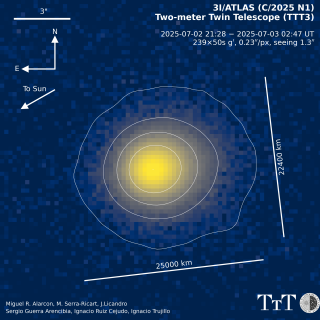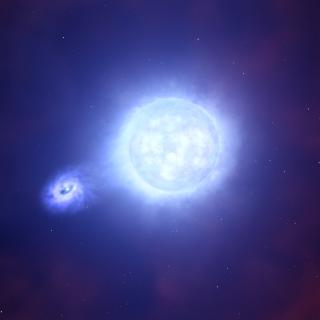It may interest you
-
 The Instituto de Astrofísica de Canarias (IAC) announces the death of its founding director, Professor Francisco Sánchez Martínez, whose determination led to the creation of one of Europe's leading research centres and two of the world's finest astrophysical observatories: the Teide Observatory in Tenerife and the Roque de los Muchachos Observatory in La Palma. He passed away today in Madrid, where he had been living for the last few years, at the age of 89. The director of the IAC, Valentín Martínez Pillet, emphasises that "Professor Sánchez's legacy is incalculable. He was a man who pavedAdvertised on
The Instituto de Astrofísica de Canarias (IAC) announces the death of its founding director, Professor Francisco Sánchez Martínez, whose determination led to the creation of one of Europe's leading research centres and two of the world's finest astrophysical observatories: the Teide Observatory in Tenerife and the Roque de los Muchachos Observatory in La Palma. He passed away today in Madrid, where he had been living for the last few years, at the age of 89. The director of the IAC, Valentín Martínez Pillet, emphasises that "Professor Sánchez's legacy is incalculable. He was a man who pavedAdvertised on -
 The Instituto de Astrofísica de Canarias (IAC) is actively participating in the observation of object 3I/ATLAS (C/2025 N1 ATLAS), initially included as A11pl3Z in the confirmed list of Near-Earth Objects (NEOs) of the International Astronomical Union's Minor Planet Centre (IAU/MPC). The object, which has been shown to be the third interstellar object detected in our solar system, was discovered by one of the telescopes in the ATLAS network for the detection and early warning of asteroids on an Earth-impact trajectory. The IAC is part of this network with its new telescope structure, ATLASAdvertised on
The Instituto de Astrofísica de Canarias (IAC) is actively participating in the observation of object 3I/ATLAS (C/2025 N1 ATLAS), initially included as A11pl3Z in the confirmed list of Near-Earth Objects (NEOs) of the International Astronomical Union's Minor Planet Centre (IAU/MPC). The object, which has been shown to be the third interstellar object detected in our solar system, was discovered by one of the telescopes in the ATLAS network for the detection and early warning of asteroids on an Earth-impact trajectory. The IAC is part of this network with its new telescope structure, ATLASAdvertised on -
 Massive stars in metal-poor galaxies often have close partners, just like the massive stars in our metal-rich Milky Way. This has been discovered by an international scientific team in which research staff from the Instituto de Aastrofísica de Canarias (IAC) and the Universidad de La Laguna (ULL) participate. They used the European Very Large Telescope in Chile to monitor the velocity of massive stars in the Small Magellanic Cloud. The research is published in Nature Astronomy . For the past twenty years, astronomers have known that many massive stars in the metal-rich Milky Way have aAdvertised on
Massive stars in metal-poor galaxies often have close partners, just like the massive stars in our metal-rich Milky Way. This has been discovered by an international scientific team in which research staff from the Instituto de Aastrofísica de Canarias (IAC) and the Universidad de La Laguna (ULL) participate. They used the European Very Large Telescope in Chile to monitor the velocity of massive stars in the Small Magellanic Cloud. The research is published in Nature Astronomy . For the past twenty years, astronomers have known that many massive stars in the metal-rich Milky Way have aAdvertised on